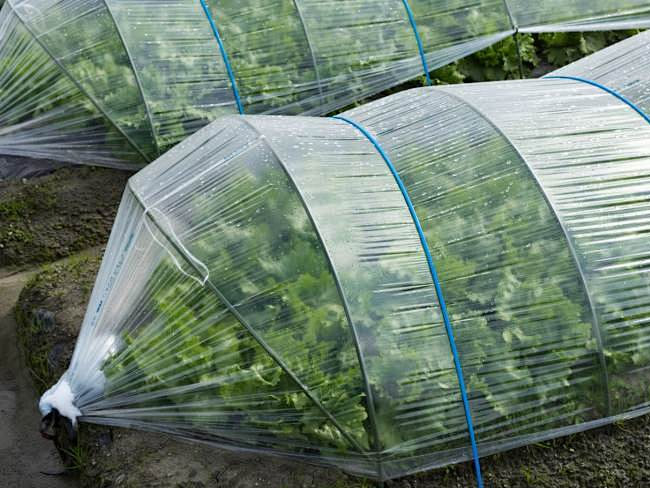
Author:Aolong PlasticDate:2025-07-28
1. The water droplets collected on the inner surface of the greenhouse film after covering the drip-free film (polychlorohydrene film) can flow along the slope to the front corner of the shed, there are no water droplets on the film, the water permeability is good, and the temperature in the shed is 4-5 degrees higher than that of the dripping film on average, which is conducive to the growth and safe wintering of melons and vegetables in winter. There are no water droplets dripping under the greenhouse film, and the humidity in the greenhouse is small, which greatly reduces the occurrence of various diseases. High temperature, good light, and light disease in the shed are important conditions for high yield and efficiency of melons and vegetables. The non-drop film is anti-aging and can generally be used for more than 2 years. However, the specific ratio of liquid-free film is large, the film thickness is 10-12um, covering about 125-130kg of 100m long shed, and the price is 20%-30% higher than that of dripping film. The film width is generally 3-4m, and it needs to be bonded when used. The use of this film is beneficial to the production of melons and vegetables in spring.
After being covered with a droplet film (polyethylene film), a large number of water droplets can accumulate on the inside of the greenhouse film, which seriously affects the light transmittance. The temperature in the greenhouse film is low, the light is weak, water droplets will drip to the ground at any time, and the humidity in the greenhouse is high. The disease is severe, which is not conducive to the growth of melons and vegetables in winter, and the yield of fruits and vegetables is low and the efficiency is poor. There is a drop film width of 8-10m, and the cover does not need to be bonded. The specific gravity is small, the film thickness is 7-8um, and it only takes 70-80kg to cover a 100m long shed, which is cheap. It is suitable for leeks, celery and other leafy vegetables that can withstand low temperature and low light and cold shed production.
